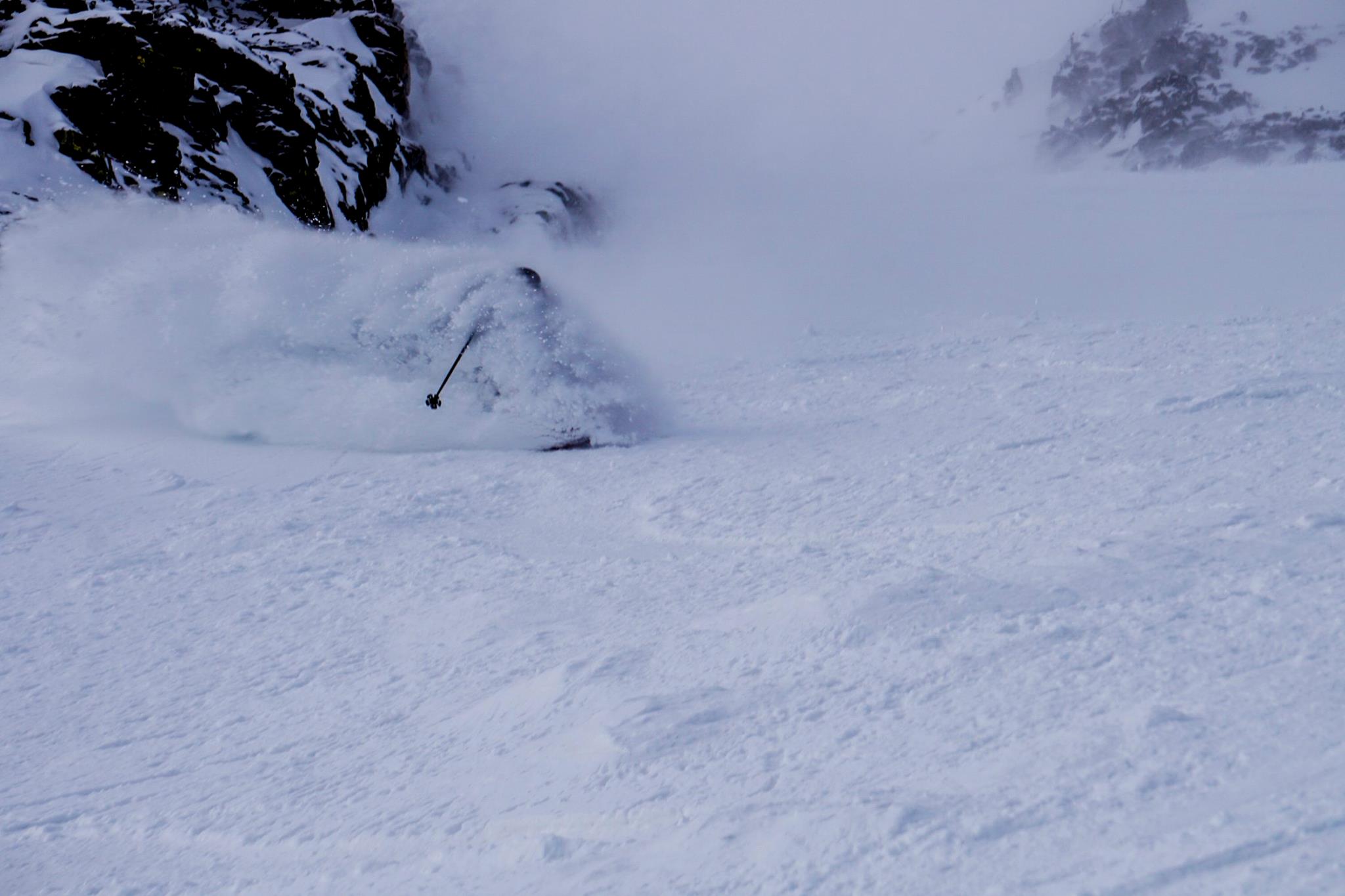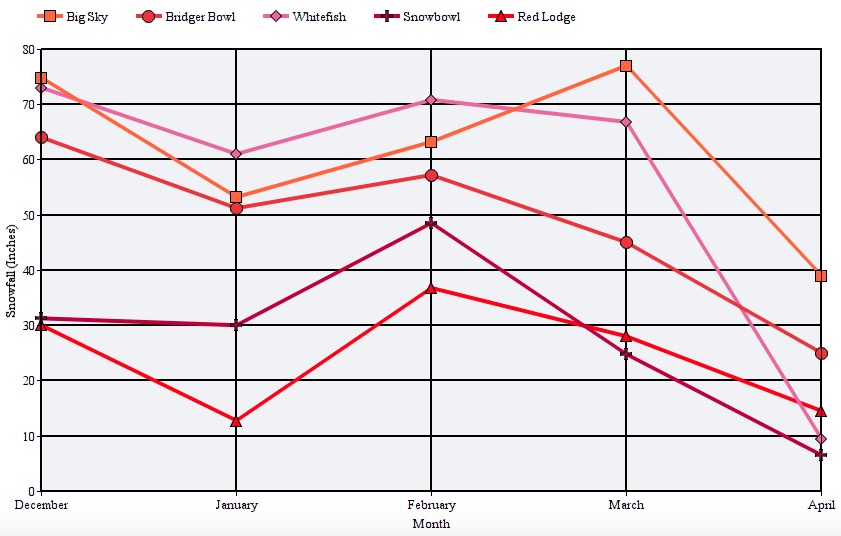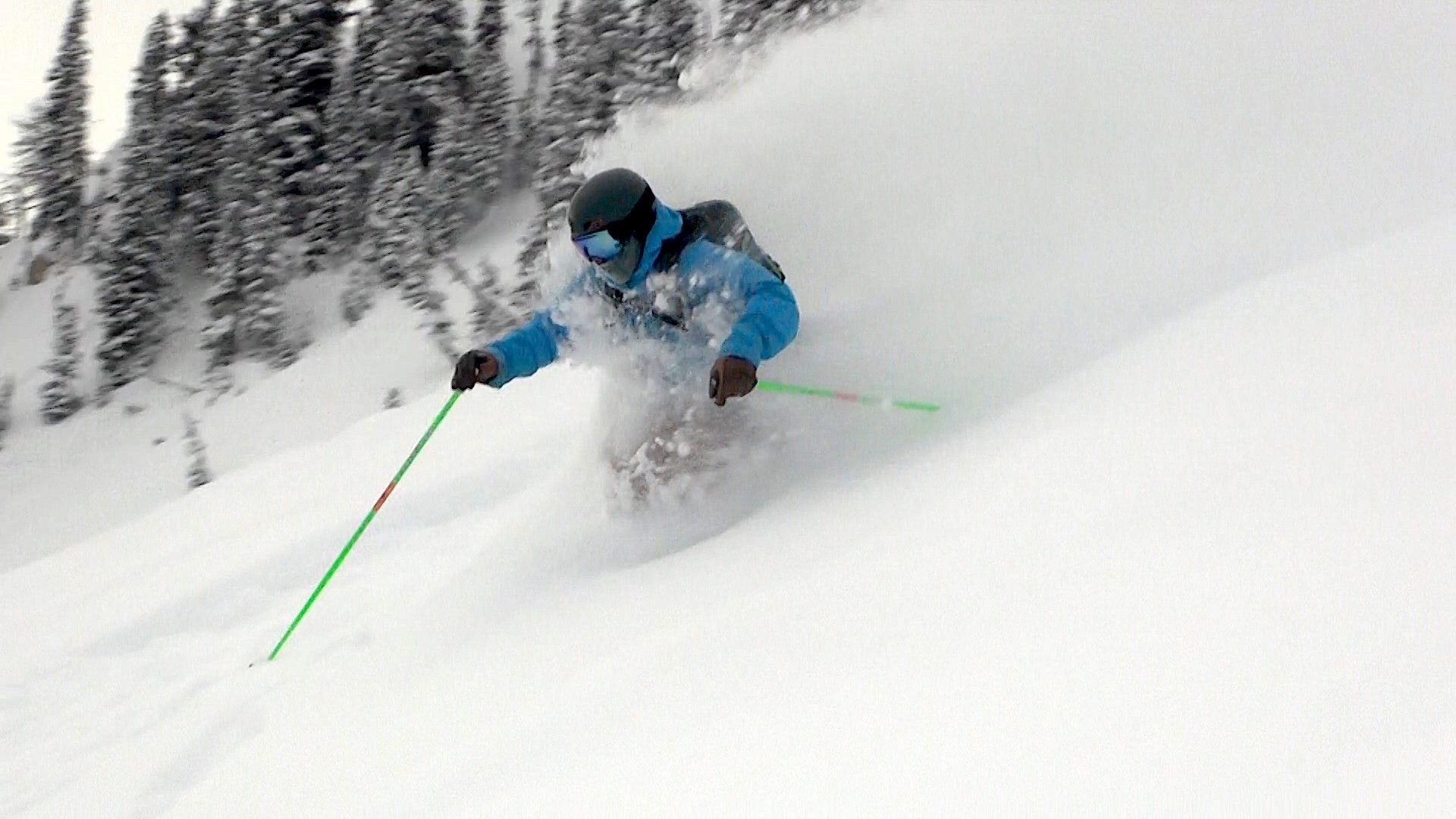
Winter is coming; time to plan some trips!
When’s the best time to ski Montana, you ask? Off the top of my head, I’d say February, but let’s look at the numbers.
I compiled average monthly snowfall data at five popular Montana ski resorts. Big Sky and Bridger Bowl are in southwest Montana near Bozeman, Red Lodge is a bit further east near Billings, and Snowbowl and Whitefish are more Northwest. There are tons of awesome local ski options scattered all over the western half of the state, but these are a good sample.
Looking at the graph below, the general snowfall trend around the state is a strong December, followed by a January lull. Things pick up again for February and March before tapering off a the end of the season. Big Sky, Bridger Bowl, and Whitefish are the 3 big winners when it comes to total snowfall.

December can be a great time to ski Montana, but base depths and temperatures can be an issue. Our cold-smoke continental snow that’s so fun to ski doesn’t add up to much once it is tracked or settled. Whitefish is your best bet for the deepest base in December, while Big Sky wins on average snowfall. Bridger Bowl is a fairly grassy mountain and skis quite well even with low snow coverage. The end of the month has a habit of being quite chilly. If you don’t mind frostbite or a few base scratches, though, it’s a great time for powder skiing. Holiday crowds are usually minimal.
The white stuff diminishes a bit in January, which is usually due to a week or two of cold, dry weather. There are still plenty of powder days to be had, but if you’re just visiting, there’s a better-than-decent chance you’ll get skunked. Whitefish Resort averages slightly more than the others, while Red Lodge looks pretty bleak. Overall, my enthusiasm for skiing usually hits a low point sometime in January.

February is Montana’s month, in my opinion, and the numbers back that up. Snowfall returns, and temperatures are cool enough for cold smoke powder skiing. It’s a good time to ski statewide. Base depths by this point in the year are usually deep enough that rocks are less of an issue, and the big mountain lines you came in search of are filling it. If you’re headed into the backcountry, be aware the January cold snap often breeds some nice facets that be problematic with big February storms.
Towards the end of the season, in March and April, snowfall generally diminishes a bit, but temperatures are warm, the sun is shining, and all the big lines are filled in. If you’re less concerned about neck-deep powder days and more about great weather and good snow, the end of the season can’t be beaten. Big Sky and Bridger Bowl are the higher-elevation resorts and will generally hold the best snow late into the season, but snow depths at all 5 resorts usually peak in April.
Montana skiing doesn’t end once the lifts close! Late April into early June can be fantastic for couloir skiing, and May usually holds at least one good powder day. Beartooth Pass opens around Memorial Day which is the gateway to Beartooth Basin Summer Ski Area and high-elevation backcountry skiing for most of the summer.
December: Whitefish, Big Sky, Bridger
January: Stay home
February: Anywhere is good
March: Still pretty good just about anywhere
April: Big Sky, Bridger
May, June, July: Beartooth Pass

I understand you took a sampling of 5 ski areas that do indeed represent the state of MT ski areas very well. Just putting my two cents in that Lookout Pass that straddles the border of MT & ID gets great snow 400+ inches each year on average with 503″ this past season. My only criticism would be that January is no question a great month to ski. As an old Norwegian friend used to say “There is never a cold day you just don’t own a warm Jacket” Get out there and enjoy the good from opening to closing day. Remember it’s always better on the border at Lookout Pass! MT Rocks! Bring on winter!
Thanks Matt! I’ll have to out Lookout on my list for this winter.